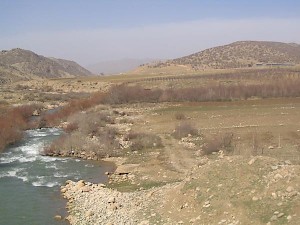Kassites / Cossaeans
Kassites (Akkadian Kaššu): tribal federation living in the Zagros mountains, in modern Luristan. In the seventeenth century BCE, they threatened Babylonia, which they captured in the fifteenth century. More than a millennium later, they are mentioned - now called Cossaeans - as enemies of Alexander the Great.

From Babylonian sources, it appears that the Kassites were a federation of several nomadic tribes (or clans) that lived in the valleys of the Zagros in the area that is now called Luristan (capital Khorammabad - still the center of a semi-nomadic tribe, the Luri's). The country is very fertile and it has been argued that the neolithic revolution, i.e., the invention of agriculture, started in this area.
In the seventeenth century BCE, the Kassites started to infiltrate Mesopotamia, which was ruled by the successors of the famous king Hammurabi of Babylon (1792-1750?). After the capital of Babylonia had been sacked by the Hittite king Mursilis I in 1595 (?), infiltration became conquest, and many Kassites settled on the alluvial plains of the Euphrates and Tigris. Once they had become "babylonized" and had learned how to organize an army, they took Babylon. The Kassite dynasty dominated southern Mesopotamia until the twelfth century.
The Kassites also influenced northern Mesopotamia, where the Assyrian variant of the Akkadian language contains many remains of the Kassite dialect.
This would have been everything, but the Kassites, which seem to have been semi-autonomous in the Achaemenid Empire, unexpectedly return in our sources in the first weeks of the year 323, when the Macedonian king Alexander sets out from Ecbatana to Babylon, and on his way encounters, defeats, and destroys the Cossaeans. The campaign was extremely bloody, and Alexander's contemporaries thought that their king was venting his emotions because his lover Hephaestion had died.
The Cossaeans were not exterminated. Cossaeans soldiers served in the Macedonian army, and in 317 BCE, the Macedonian commander Antigonus Monophthalmus still encountered people in this area. However, it is significant that they are called cavemen, and no longer nomadic pastoralists.